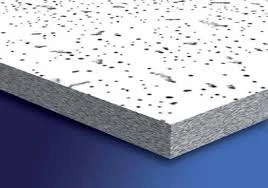Dec . 13, 2024 05:35 Back to list
ceiling mounted access panels
Ceiling Mounted Access Panels An Essential Element for Modern Construction
In contemporary architecture and construction, the integration of highly functional design elements is crucial for creating spaces that are not only aesthetically appealing but also practical. One such element that has gained significant attention is the ceiling mounted access panel. These panels play a pivotal role in facilitating easy access to essential services and maintenance areas that are usually tucked away in ceilings, making them an invaluable option for both residential and commercial buildings.
Understanding Ceiling Mounted Access Panels
Ceiling mounted access panels, as the name suggests, are installations affixed to the ceiling, allowing for hidden access to utilities, mechanical systems, or ductwork. These panels are typically made from various materials, including gypsum, metal, or plastic, and come in numerous sizes and designs to suit different applications. Their primary purpose is to provide unobtrusive access points for maintenance personnel, ensuring that vital services are always within reach without compromising the aesthetic integrity of the interior space.
The Importance of Access Panels in Construction
Efficient building management relies heavily on the ability to conduct maintenance without disrupting the everyday function of a space. Ceiling mounted access panels allow for quick and easy access to crucial infrastructure such as electrical wiring, plumbing, HVAC systems, and fire suppression systems. By embedding these panels in ceilings, contractors can minimize the disruption that maintenance and emergency repairs can cause. Consequently, they contribute to better operational efficiency, reducing downtime and maintaining a seamless experience for occupants and visitors alike.
Design Versatility
ceiling mounted access panels

One of the notable advantages of ceiling mounted access panels is their design versatility. Available in various finishes and styles, these panels can seamlessly blend into any interior décor. Whether in a residential setting or a commercial environment, access panels can be customized to match ceilings, ensuring they are discreet yet functional. Some designs even feature concealed hinges or locking mechanisms, adding an extra layer of security while maintaining a polished look.
Installation Considerations
Installing ceiling mounted access panels should be approached with careful consideration of building codes and accessibility standards. Proper placement is critical, as it must allow for easy reach while ensuring that the panels do not interfere with the overall ceiling aesthetics or building operations. It is also essential to ensure that the materials used are able to withstand the demands of the environment, which may include moisture resistance in bathrooms or kitchens or fire-rated panels in specific commercial settings.
Maintenance and Longevity
Access panels are built to stand the test of time, but they do require some degree of maintenance to ensure they continue to function effectively. Regular inspections are recommended to check for any signs of wear or damage due to environmental factors or mechanical stresses. This is particularly vital in commercial spaces where access to critical systems is heavily relied upon. By maintaining these access points properly, property owners can extend their lifespan and effectiveness, ultimately protecting their investment.
Conclusion
In summary, ceiling mounted access panels are an essential element in modern construction, providing a perfect blend of functionality and aesthetic appeal. Their ability to offer discreet access to vital systems makes them indispensable in both residential and commercial applications. As buildings continue to evolve and the demand for efficient infrastructure management increases, the importance of ceiling mounted access panels will undoubtedly grow. By incorporating these panels into design plans, architects, contractors, and property owners can ensure that their spaces remain conducive to maintenance, operational efficiency, and overall visual appeal, contributing to the longevity and functionality of the structures they inhabit.
-
Durable Ceiling T Grid Systems | Easy InstallationNewsAug.29,2025
-
PVC Gypsum Ceiling: Durable, Laminated Tiles for Modern SpacesNewsAug.28,2025
-
Pvc Gypsum Ceiling Is DurableNewsAug.21,2025
-
Mineral Fiber Board Is DurableNewsAug.21,2025
-
Ceiling Tile Clip Reusable DesignNewsAug.21,2025
-
Ceiling T Grid Modular DesignNewsAug.21,2025







